Wake Flow Investigation on Notchback MIRA Model by PIV Experiments
Abstract
:1. Introduction
2. Methods
2.1. Wind Tunnel and Vehicle Model
2.2. PIV Measurements
3. Analysis of Longitudinal Structures (y–z Planes)
3.1. Time-Averaged Flow
3.2. Instantaneous Flow
4. Analysis of Spanwise Structures (x–z Planes)
4.1. Time-Averaged Flow
4.2. Instantaneous Flow
5. Analysis of Vertical Structures (x–y Planes)
5.1. Instantaneous Flow
5.2. Time-Averaged Flow
6. Conclusions
- A-pillar vortex extends backwards along both sides of the roof and meets with shear airflow on both sides of the body at the back. A pair of longitudinal vortices with small scale forms and then moves toward the middle of the tail under the compression of the C-pillar vortex. Finally, under the action of the downwash airflow, it flows into the tail flow and disappears;
- There are two recirculation bubbles appearing behind the model tail due to the flow separation from the upper and the lower edges, referred to as vortices E and F, respectively. Additionally, the structure of vortex E resembles an L type, rather than the horseshoe type. The F vortex is composed of a row of alternating small vortices, which is characterized by a vortex with a rib structure in the vertical direction and a wave shape;
- Due to the upward angle of the tail of the MIRA model, a pair of predominant longitudinal 3D vortices similar to the C-pillar vortex, namely the D vortex, appears in the tail flow field structure. Additionally, C-pillar vortex contributes more energy than the D vortex. A pair of vertical separation vortices, namely I vortex, generates due to the airflow separation on both sides of the tail of the model;
- Between the ground and the model underside, due to the flow pressure difference between the inside gap and the outside, the shear layer eventually rolls up into a pair of longitudinal vortices Gt;
- The instantaneous flow shows a certain formation and shedding cycle of the hairpin vortex. It is deduced that a new vortex reproduces on the back window only after a vortex sheds from the deck lid.
Author Contributions
Funding
Informed Consent Statement
Conflicts of Interest
References
- Beaudoin, J.-F.; Aider, J.-L. Drag and lift reduction of a 3D bluff body using flaps. Exp. Fluids 2008, 44, 491–501. [Google Scholar] [CrossRef]
- Tunay, T.; Sahin, B.; Akilli, H. Experimental and numerical studies of the flow around the Ahmed body. Wind. Struct. Int. J. 2013, 17, 515–535. [Google Scholar] [CrossRef]
- Carr, G.W. Correlation of Pressure Measurements in Model and Full-Scale Wind Tunnels and on the Road; SAE Technical Paper Series; SAE International: Warrendale, PA, USA, 1975; Volume 84, pp. 365–379. [Google Scholar]
- Nouzawa, T.; Haruna, S.; Hiasa, K.; Nakamura, T.; Sato, H. Analysis of Wake Pattern for Reducing Aerodynamic Drag of Notchback Model; SAE Technical Paper Series; SAE International: Warrendale, PA, USA, 1990; Volume 99, pp. 486–494. [Google Scholar]
- Nouzawa, T.; Hiasa, K.; Nakamura, T.; Kawamoto, A.; Sato, H. Unsteady-Wake Analysis of Aerodynamic Drag of a Notchback Model with Critical Afterbody Geometry; SAE Technical Paper Series; International Congress & Exposition: Amsterdam, The Netherlands, 1992. [Google Scholar]
- Hucho, W.H. Aerodynamics of Road Vehicle from Fluid Mechanics to Vehicle. Engineering, 4th ed.; Butterworth-Heinemann: Oxford, UK, 1987. [Google Scholar]
- Jenkins, L.N. An Experimental Investigation of the Flow Over the Rear End of a Notchback Automobile Configuration; SAE Technical Paper Series; SAE International: Warrendale, PA, USA, 2000; Volume 109, pp. 477–496. [Google Scholar]
- Gilhome, B.R.; Saunders, J.W.; Sheridan, J. Time Averaged and Unsteady Near-Wake Analysis of Cars; SAE Technical Paper; SAE International: Warrendale, PA, USA, 2001; Volume 110, pp. 1179–1196. [Google Scholar]
- Okada, Y.; Nouzawa, T.; Nakamura, T.; Okamoto, S. Flow structures above the trunk deck of sedan-type vehicles and their influence on high-speed vehicle stability 1st report: On-road and wind tunnel studies on unsteady flow characteristics that stabilize vehicle behavior. SAE Int. J. Passeng. Cars Mech. Syst. 2009, 2, 138–156. [Google Scholar] [CrossRef]
- Bonitz, S.; Larsson, L.; Lofdahl, L.; Broniewicz, A. Structures of Flow Separation on a Passenger Car. SAE Int. J. Passeng. Cars Mech. Syst. 2015, 8, 177–185. [Google Scholar] [CrossRef] [Green Version]
- Cadot, O.; Courbois, A.; Ricot, D.; Ruiz, T.; Harambat, F.; Herbert, V.; Vigneron, R.; Délery, J. Characterisations of force and pressure fluctuations of real vehicles. Int. J. Eng. Syst. Model. Simul. 2016, 8, 99. [Google Scholar] [CrossRef]
- Wieser, D.; Nayeri, C.N.; Paschereit, C.O. Wake Structures and Surface Patterns of the DrivAer Notchback Car Model under Side Wind Conditions. Energies 2020, 13, 320. [Google Scholar] [CrossRef] [Green Version]
- Palaskar, P.M. Effect of Side Taper on Aerodynamics Drag of a Simple Body Shape with Diffuser and without Diffuser. SAE Technical Paper 2016-01-1621. 2016. Available online: https://www.sae.org/publications/technical-papers/content/2016-01-1621/ (accessed on 28 July 2021).
- Bearman, P. Near wake flows behind two- and three-dimensional bluff bodies. J. Wind. Eng. Ind. Aerodyn. 1997, 69–71, 33–54. [Google Scholar] [CrossRef]
- Liu, K.; Zhang, B.; Zhang, Y.; Zhou, Y. Flow structure around a low-drag Ahmed body. J. Fluid Mech. 2021, 913, A21. [Google Scholar] [CrossRef]
- Lawson, N.J.; Garry, K.P.; Faucompret, N. An investigation of the flow characteristics in the bootdeck region of a scale model notchback saloon vehicle. Part D J. Automob. Eng. 2007, 221, 739–754. [Google Scholar] [CrossRef] [Green Version]
- Wang, X.W.; Zhou, Y.; Pin, Y.F.; Chan, T.L. Turbulent near wake of an Ahmed vehicle model. Exp. Fluids 2013, 54, 1–19. [Google Scholar] [CrossRef]
- Cenedese, A.; Doglia, G.; Sallusti, M.; Viotti, P. PIV velocity measurements close to a bluff body. J. Wind. Eng. Ind. Aerodyn. 1993, 50, 383–392. [Google Scholar] [CrossRef]
- Goh, E.K. An Experimental Study into the Time-Dependent Characteristics of a Road Vehicle Wake Flow. Ph.D. Thesis, Department of Aeronautics, Imperial College, London, UK, 1994. [Google Scholar]
- Ahmed, S.R.; Ramm, G.; Faltin, G. Some Salient Features of the Time-Averaged ground Vehicle Wake; SAE Transactions: Warrendale, PA, USA, 1984. [Google Scholar]

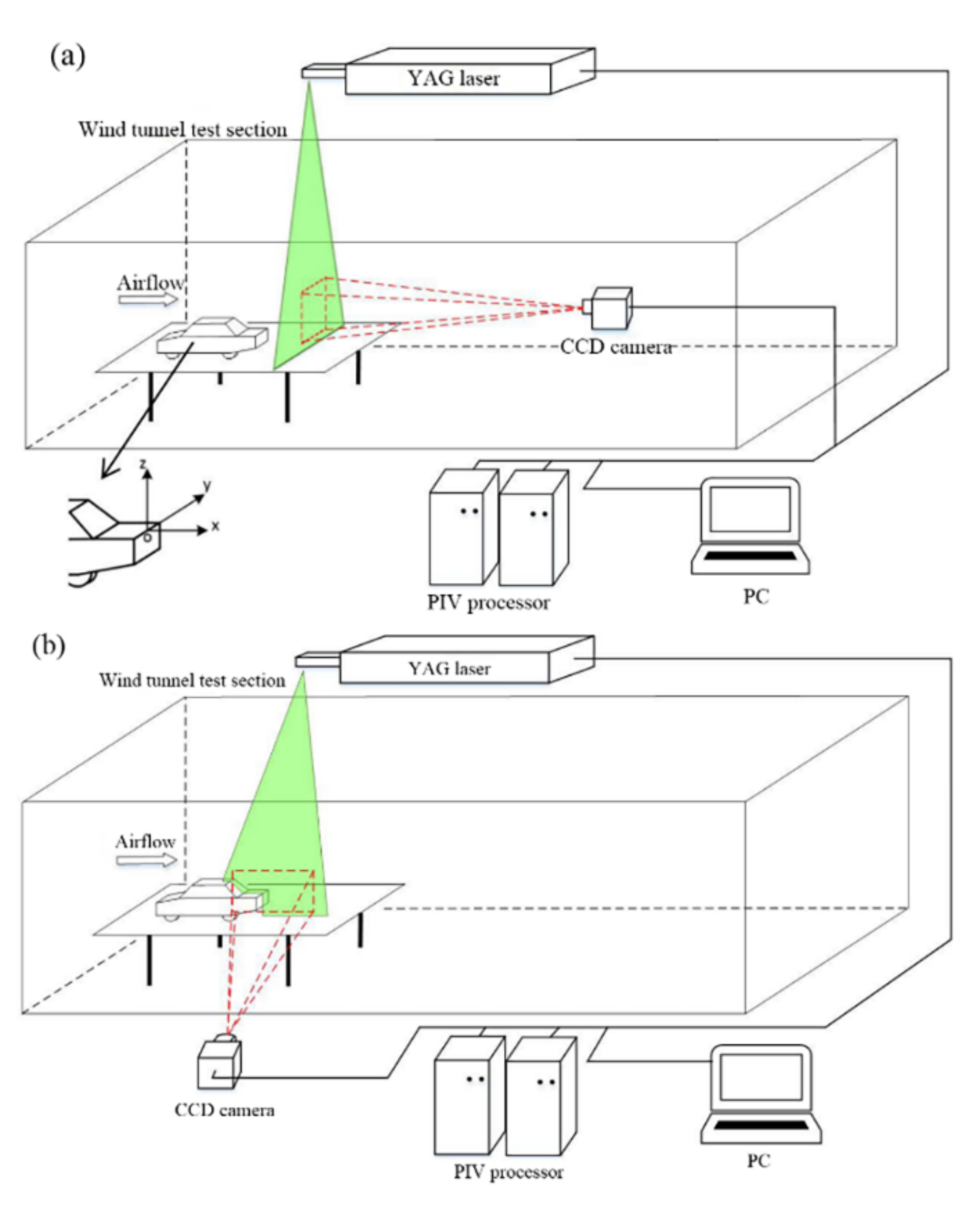
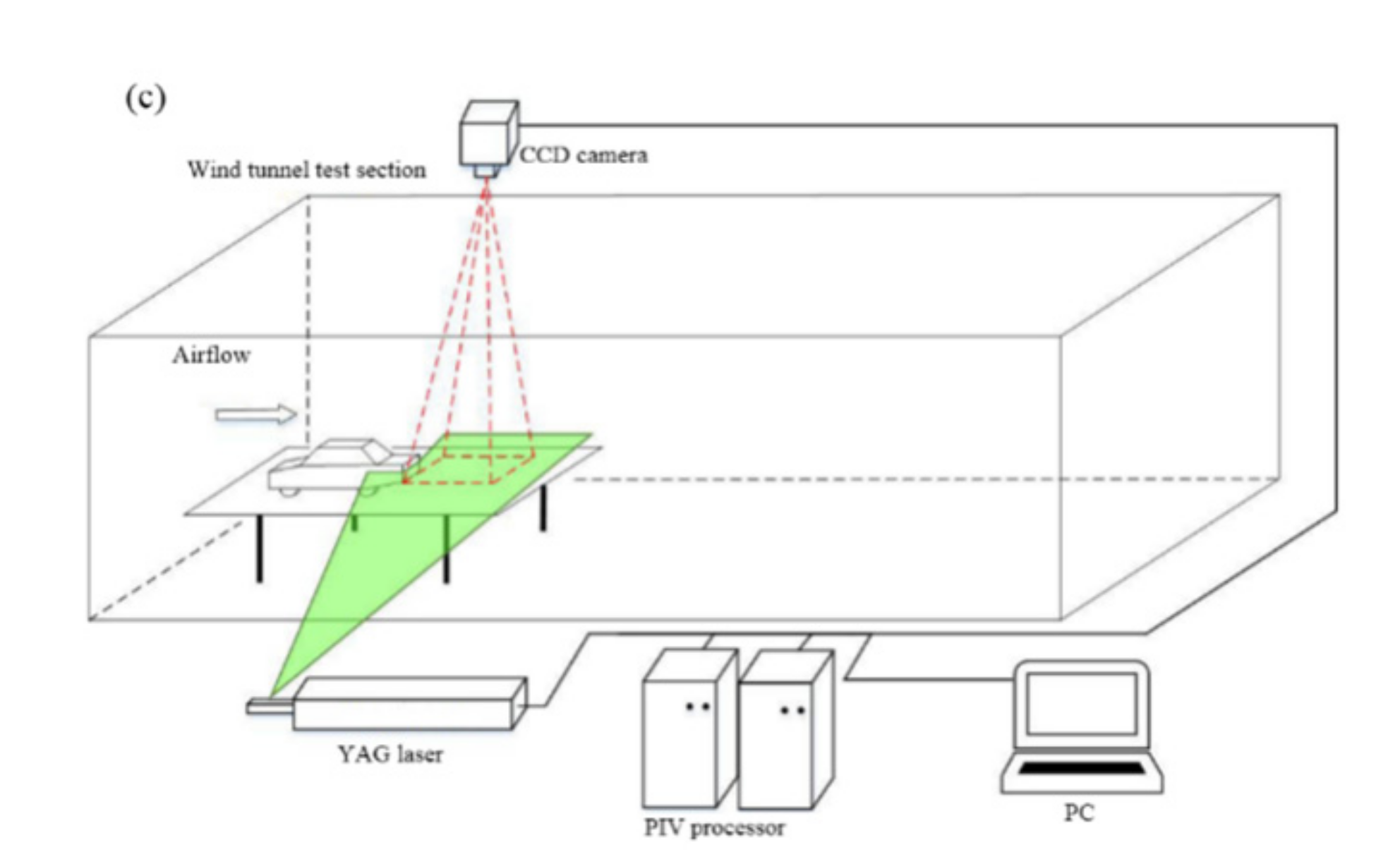


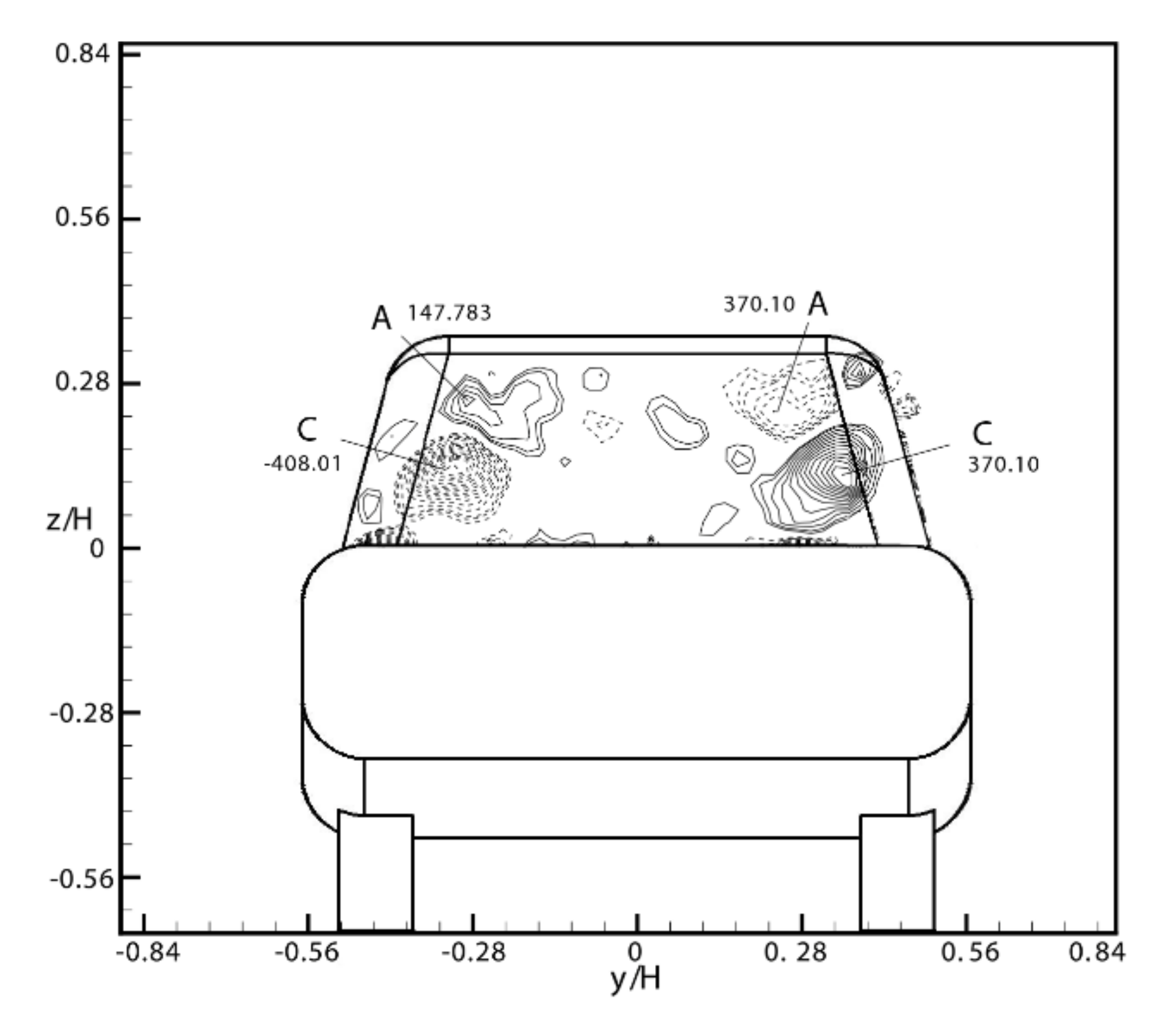
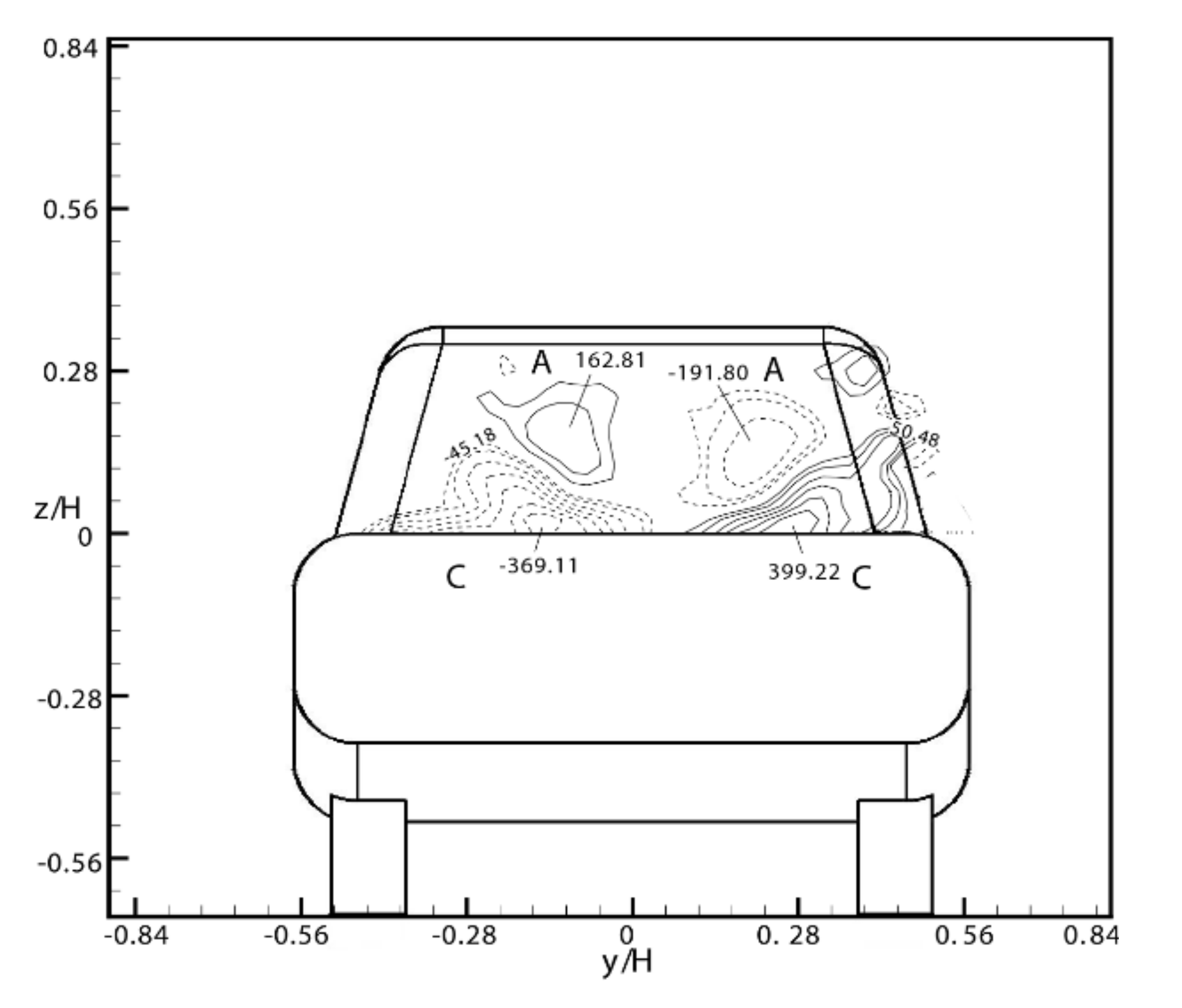
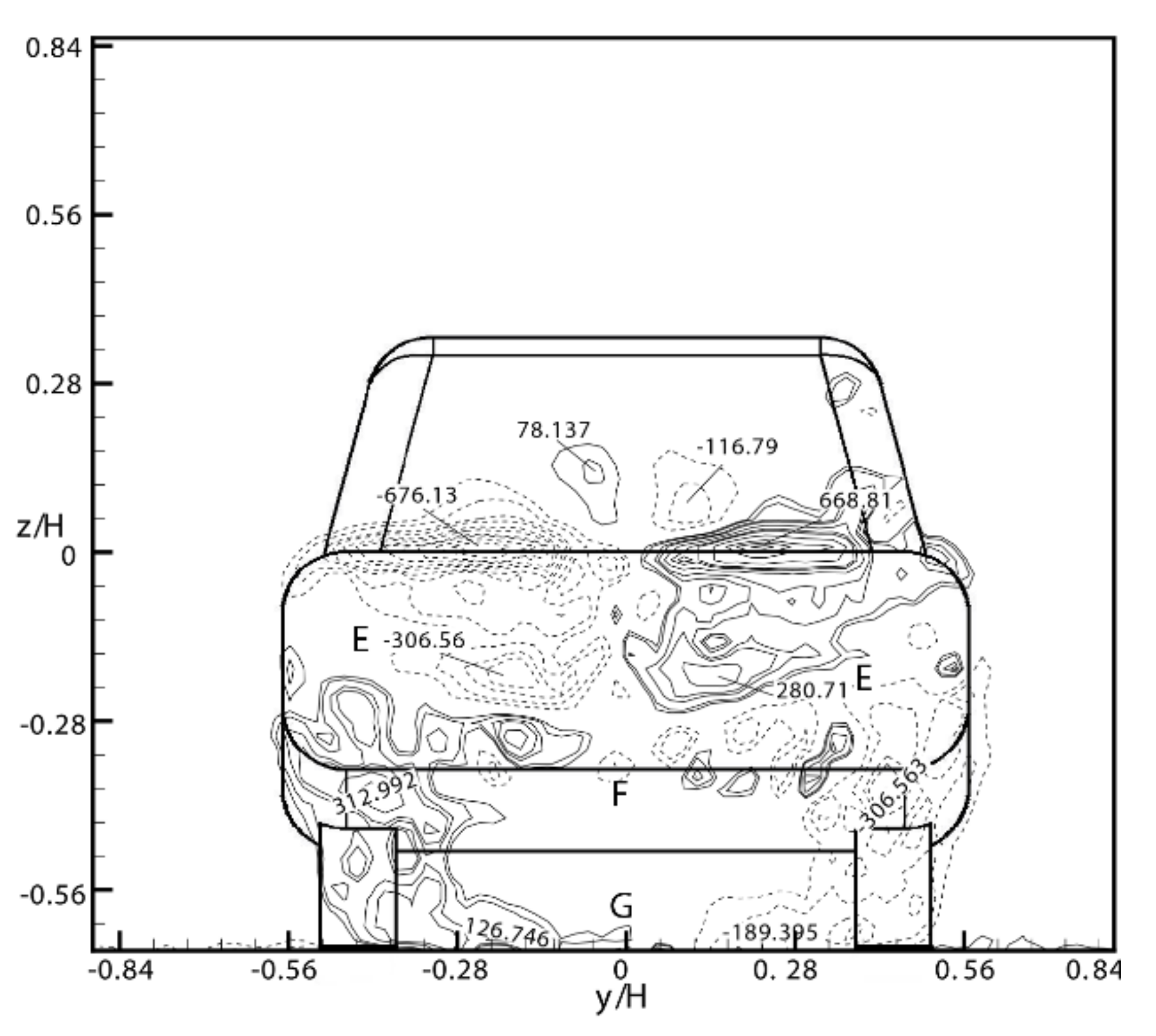
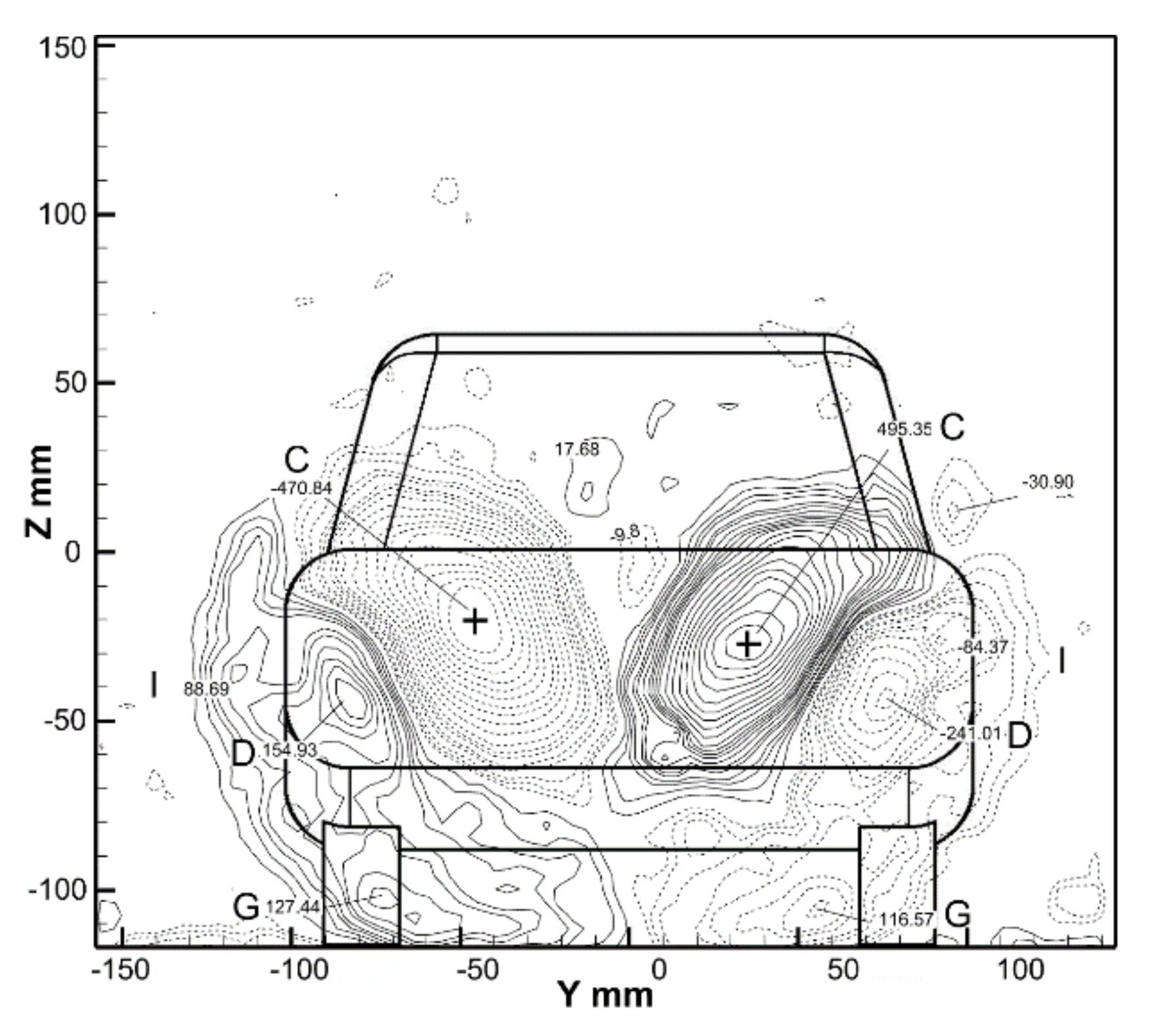
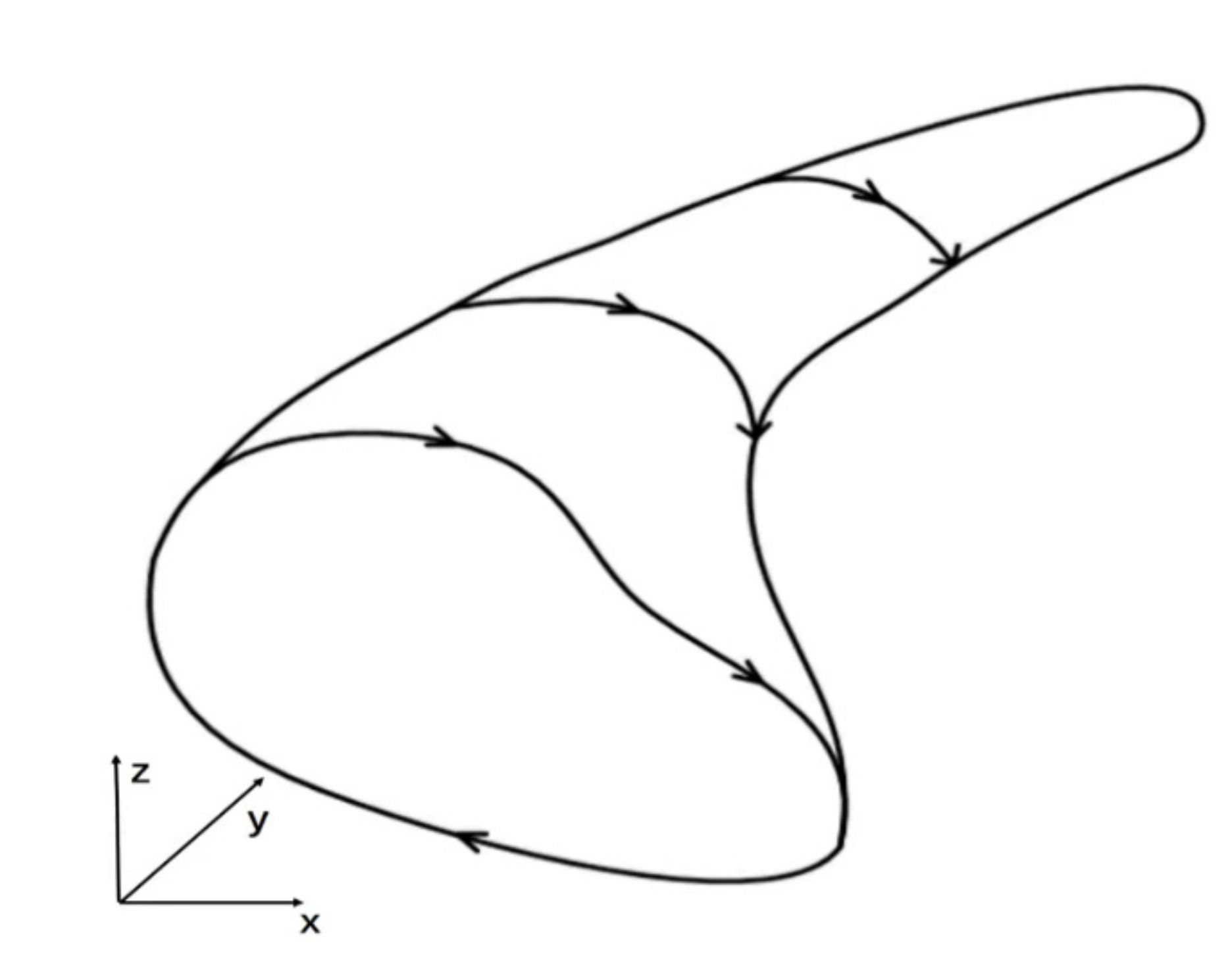
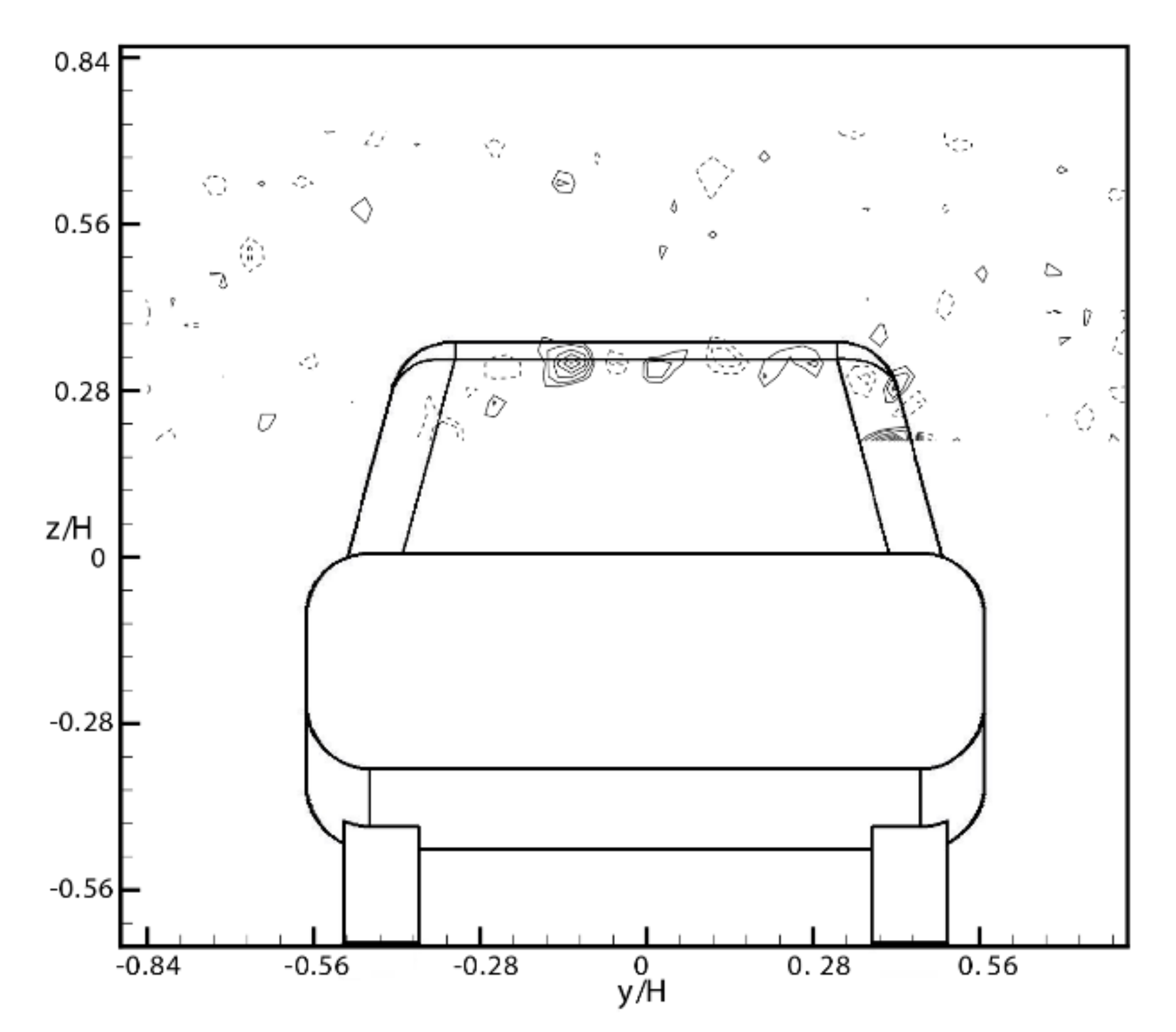

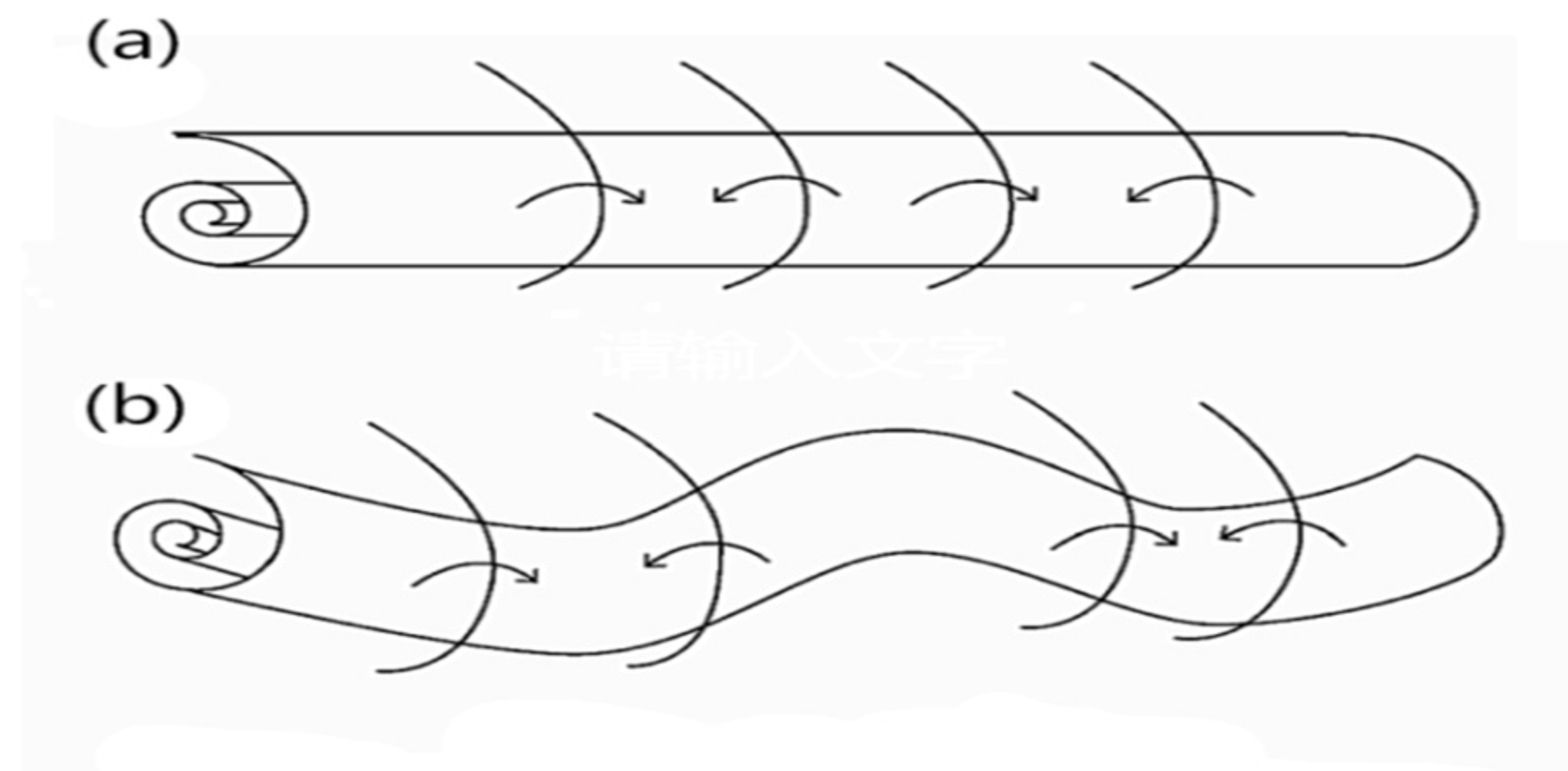

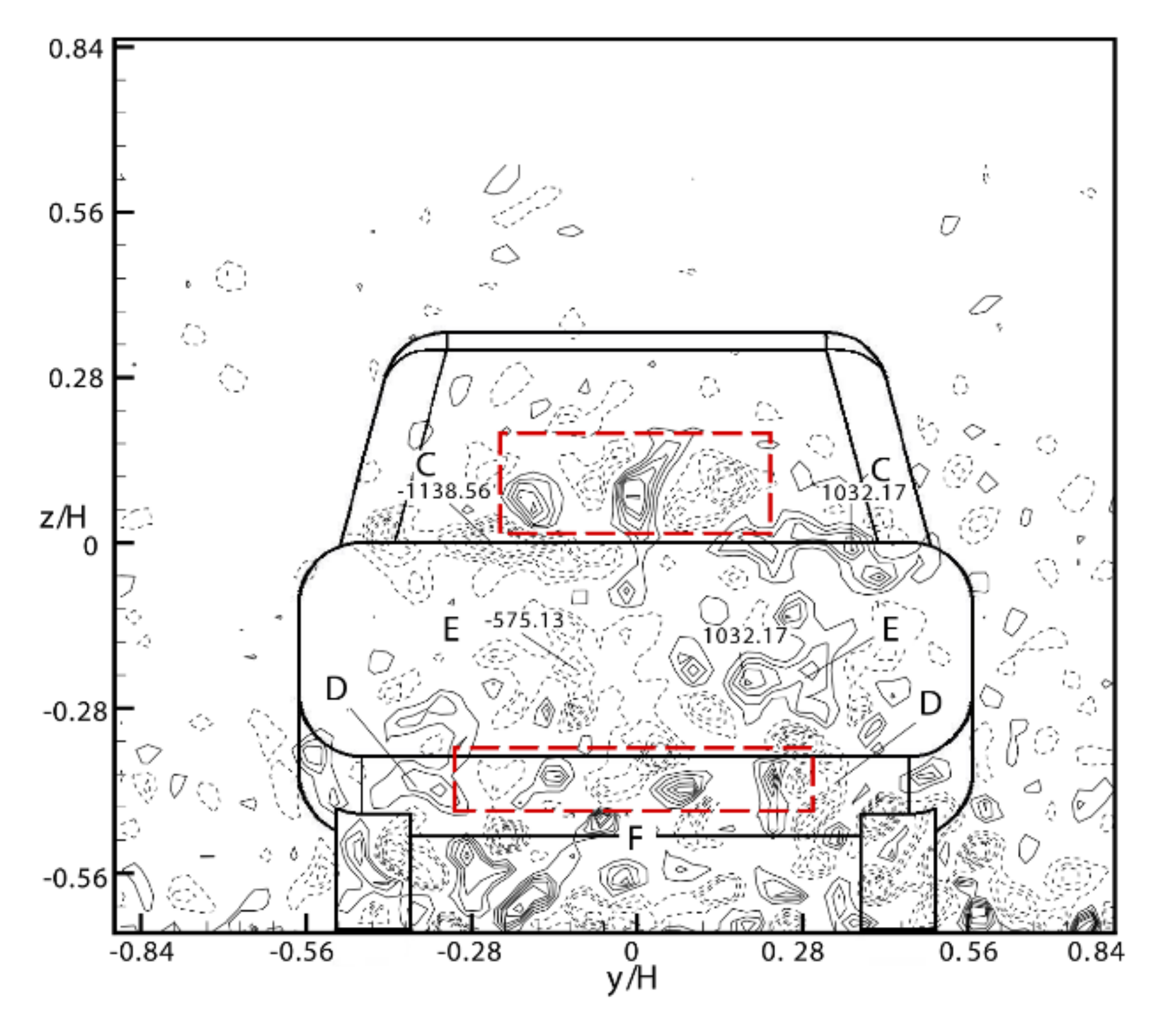


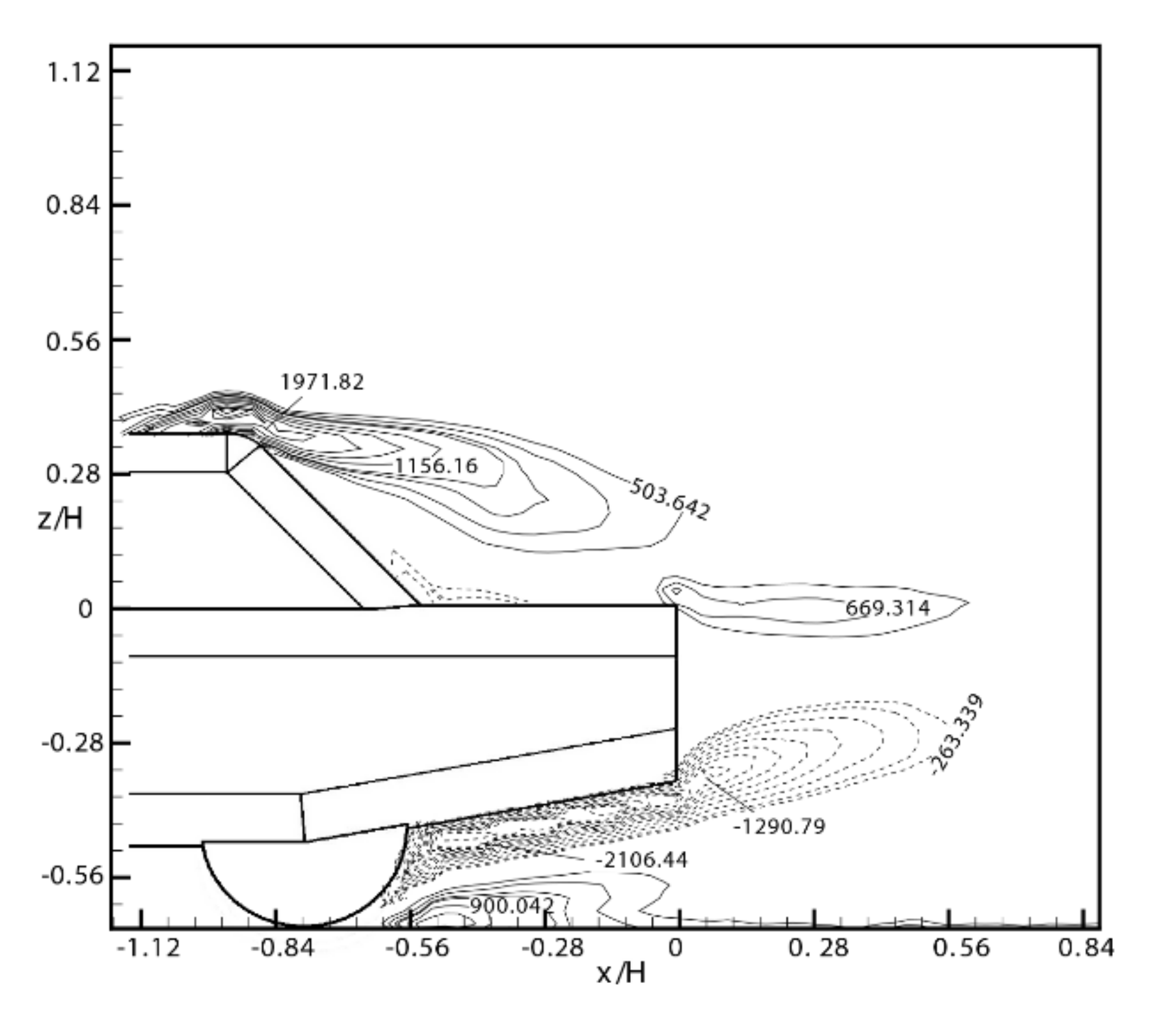
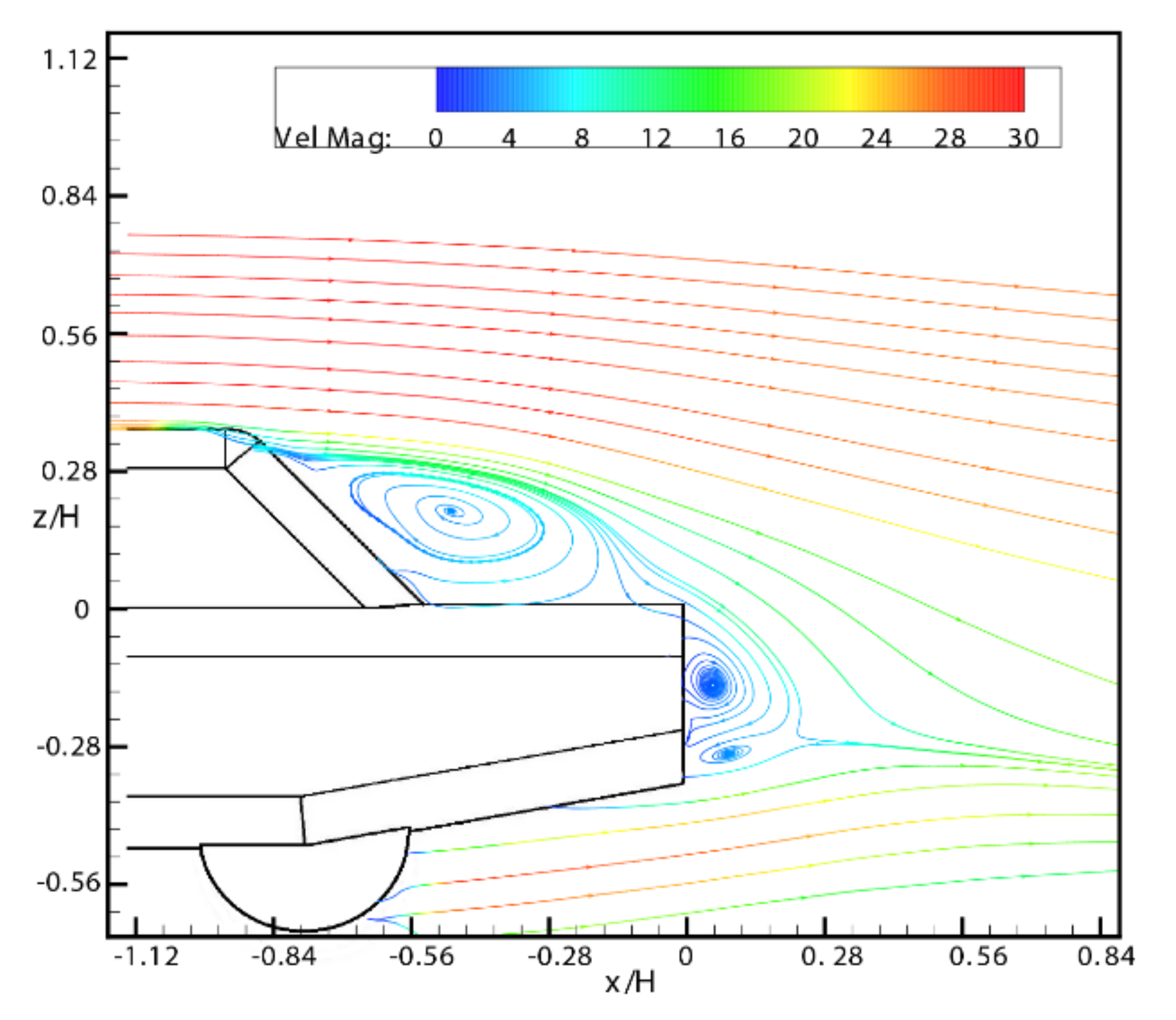
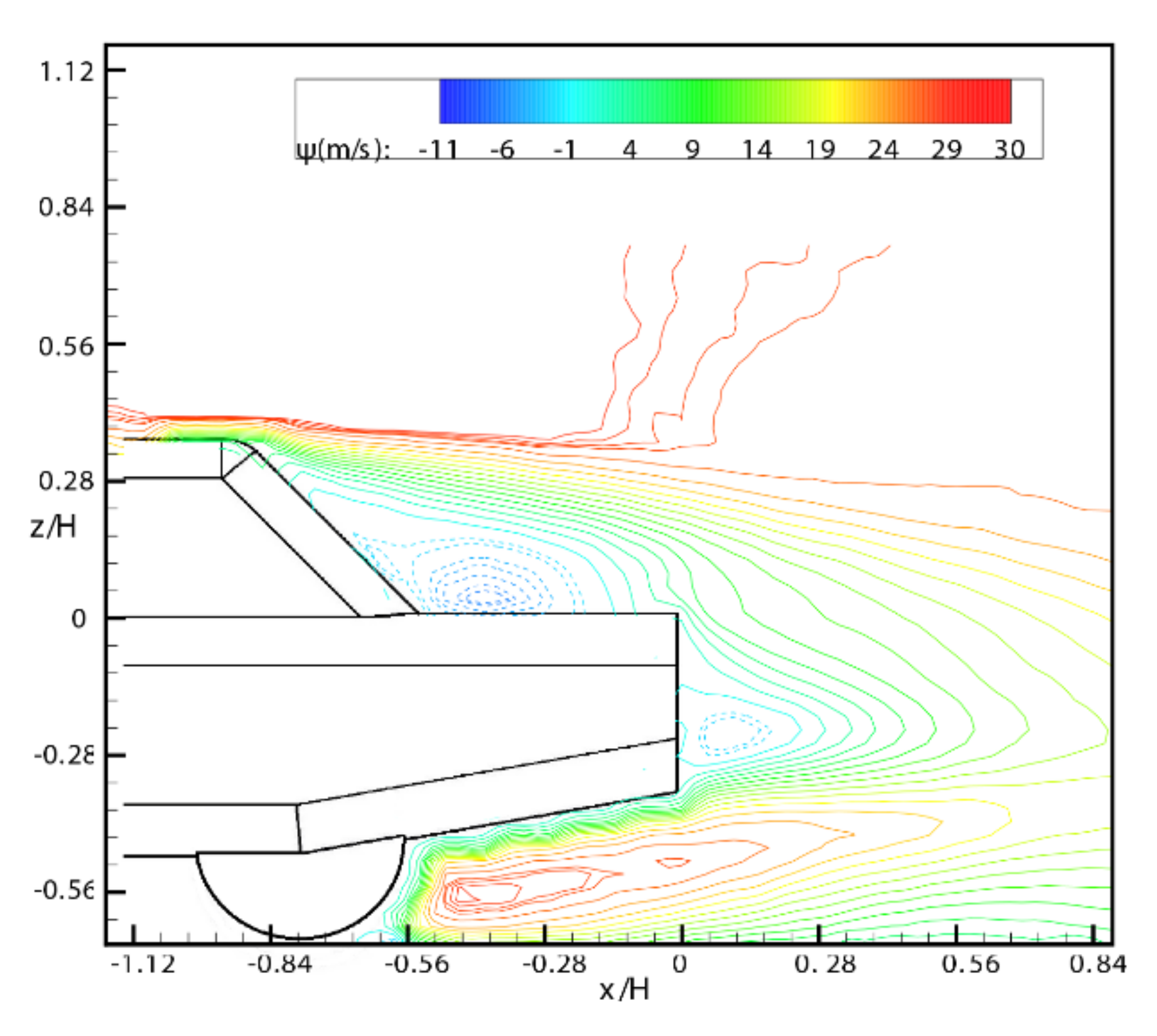
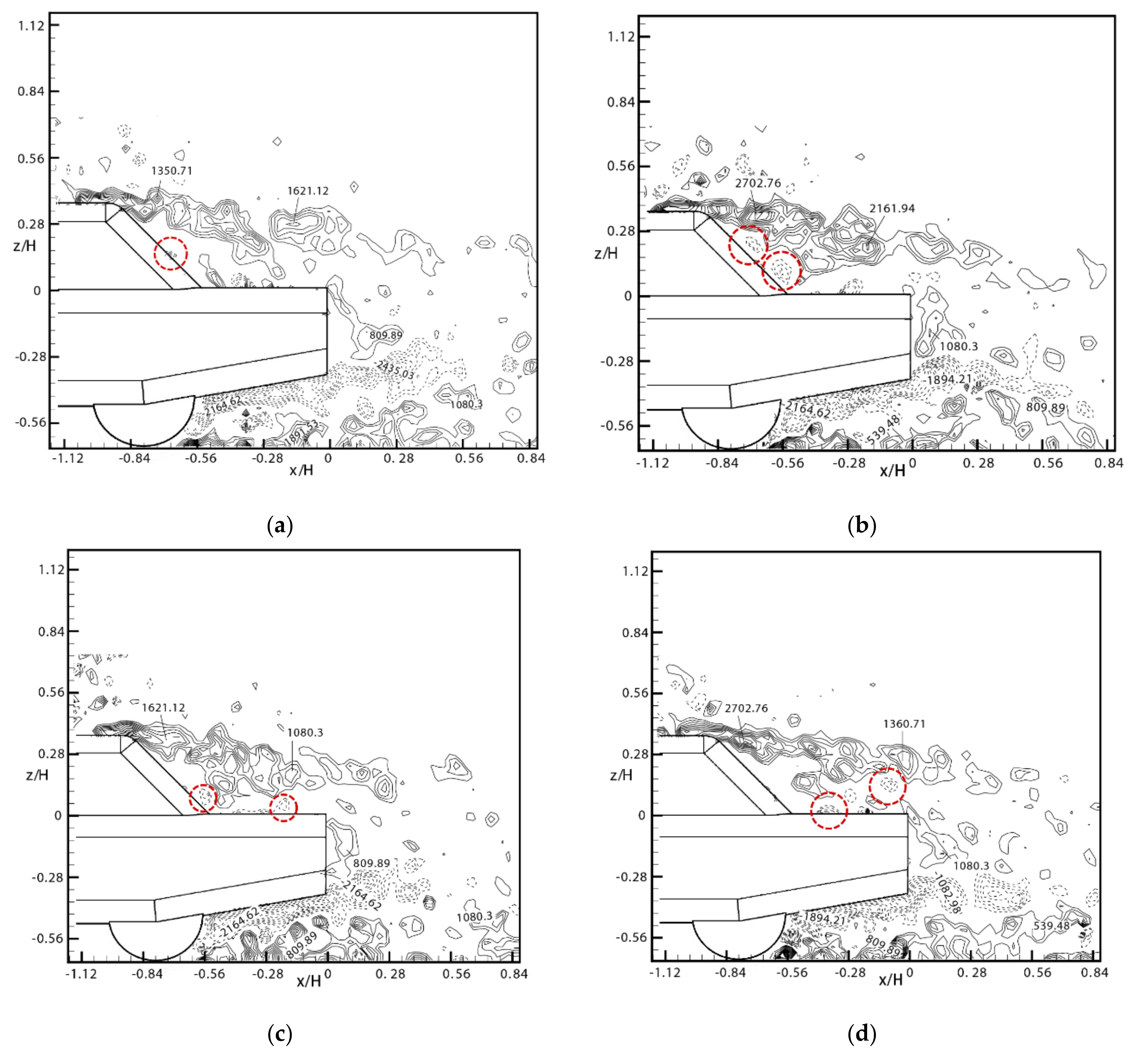
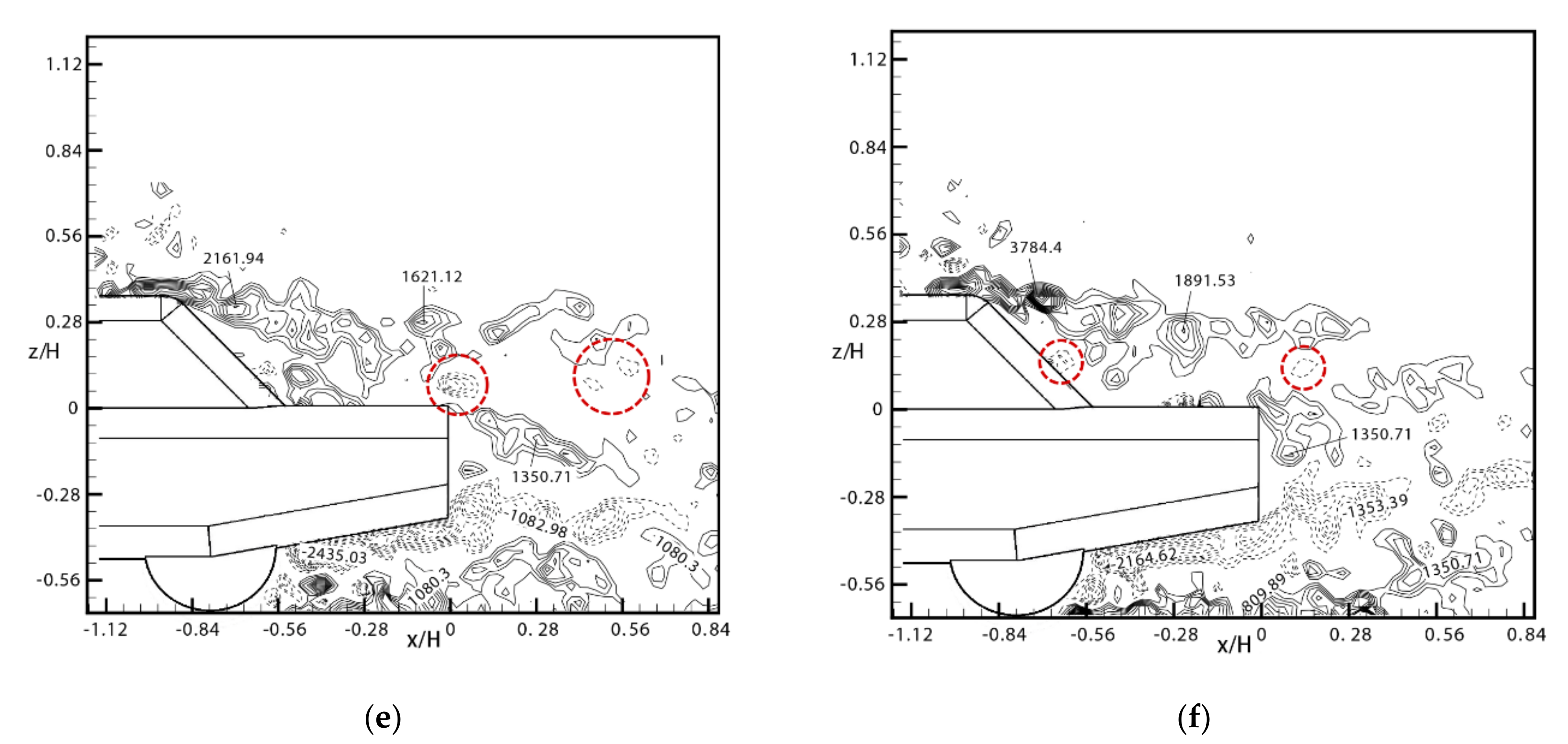
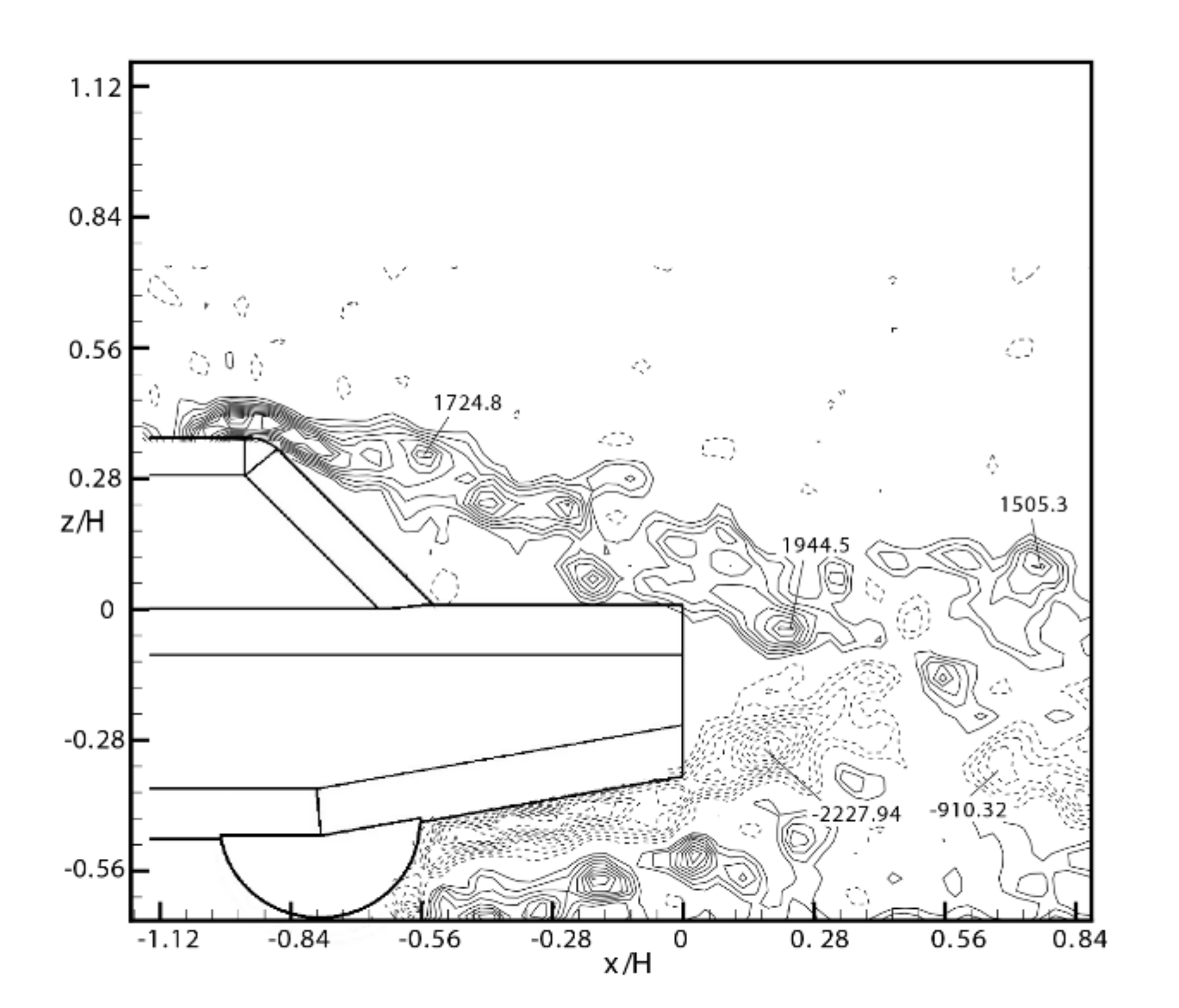
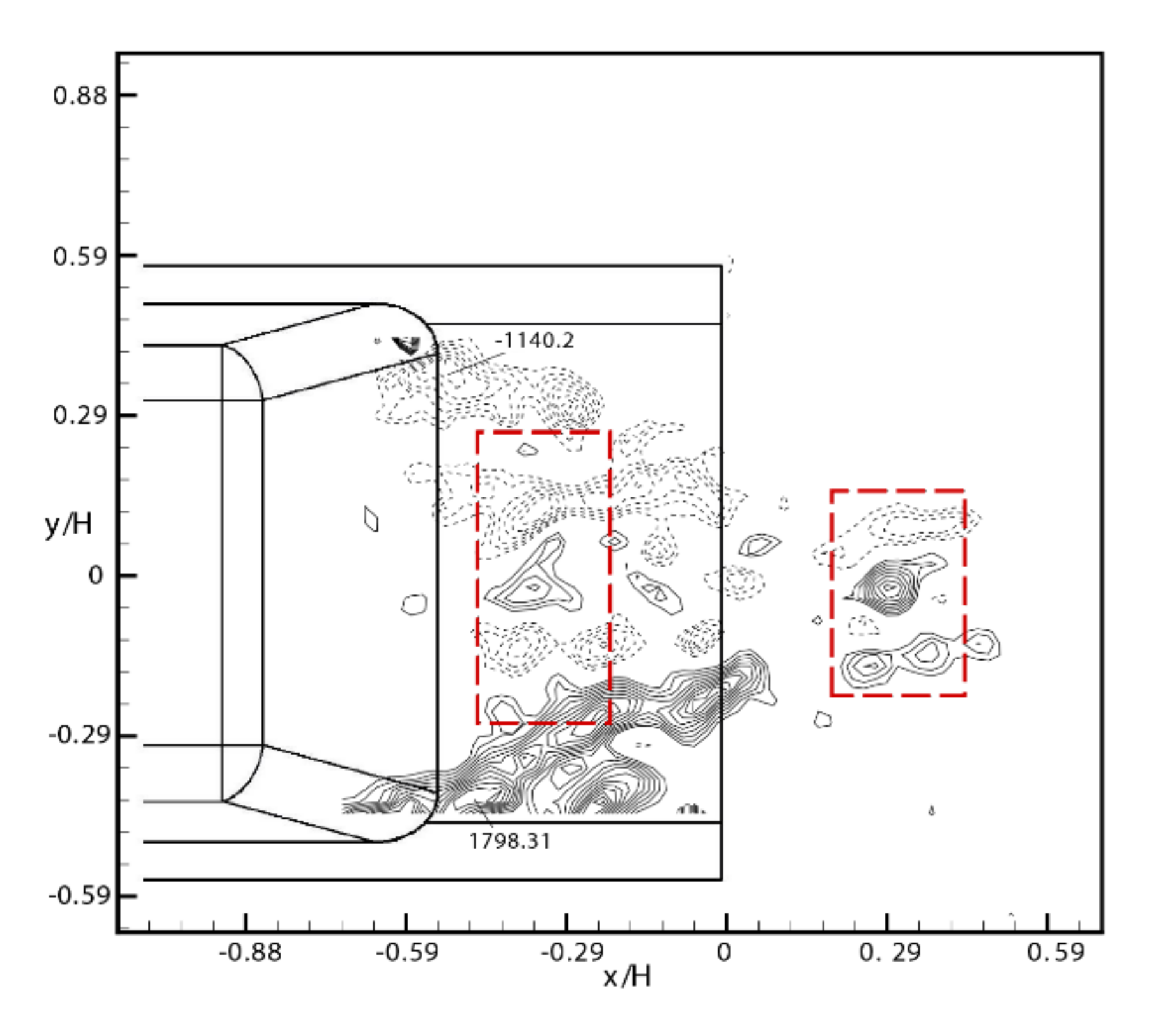
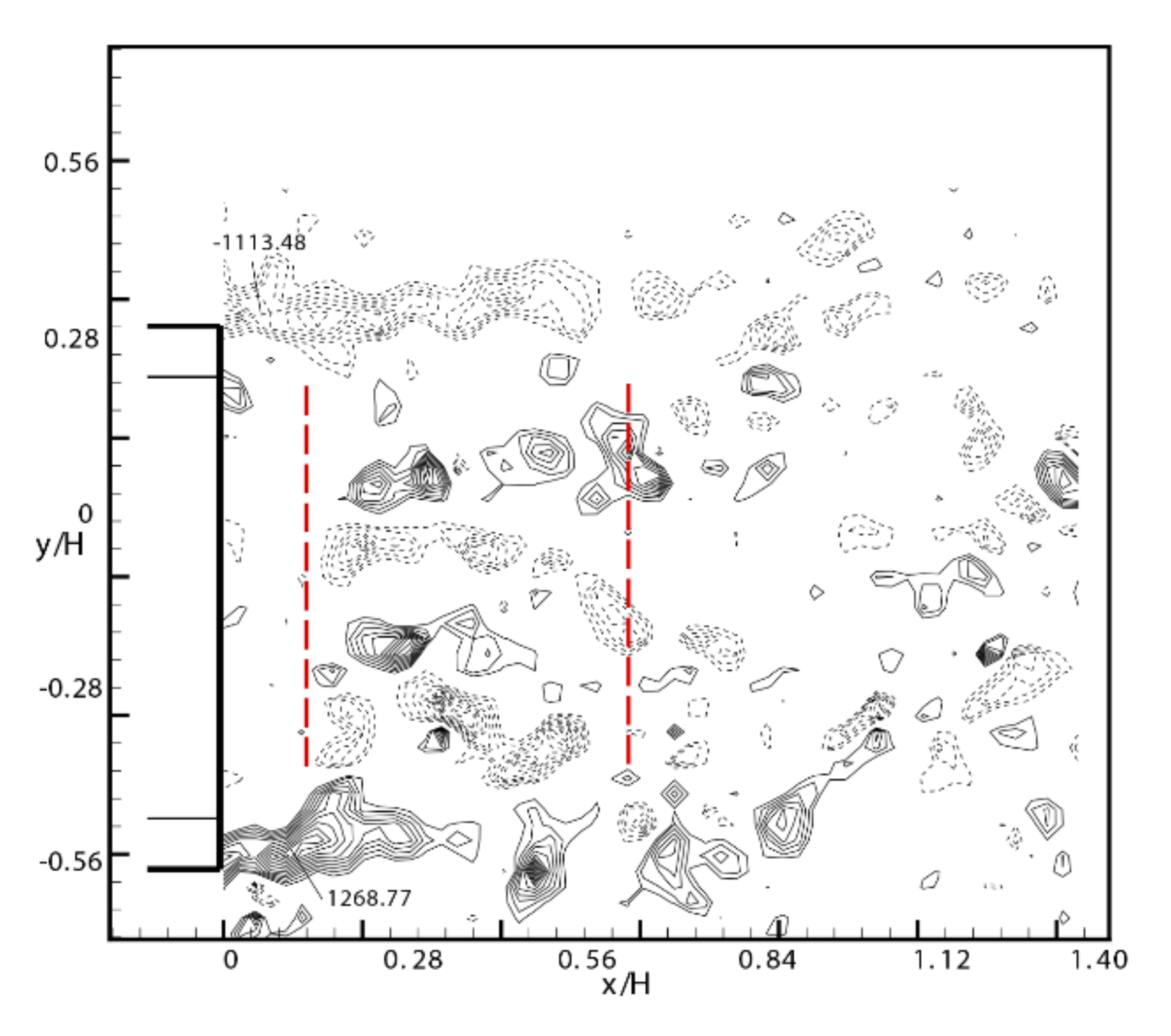
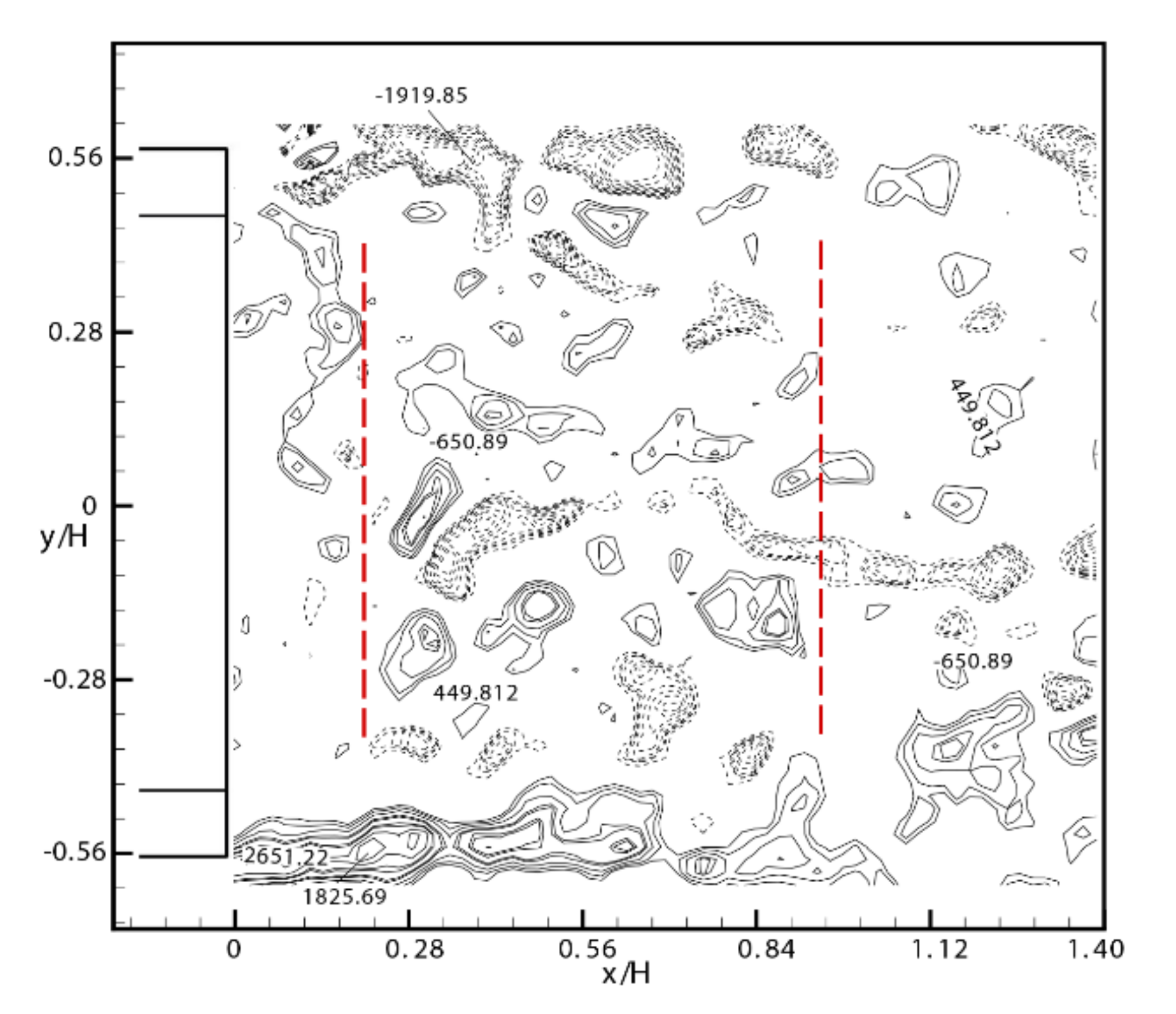

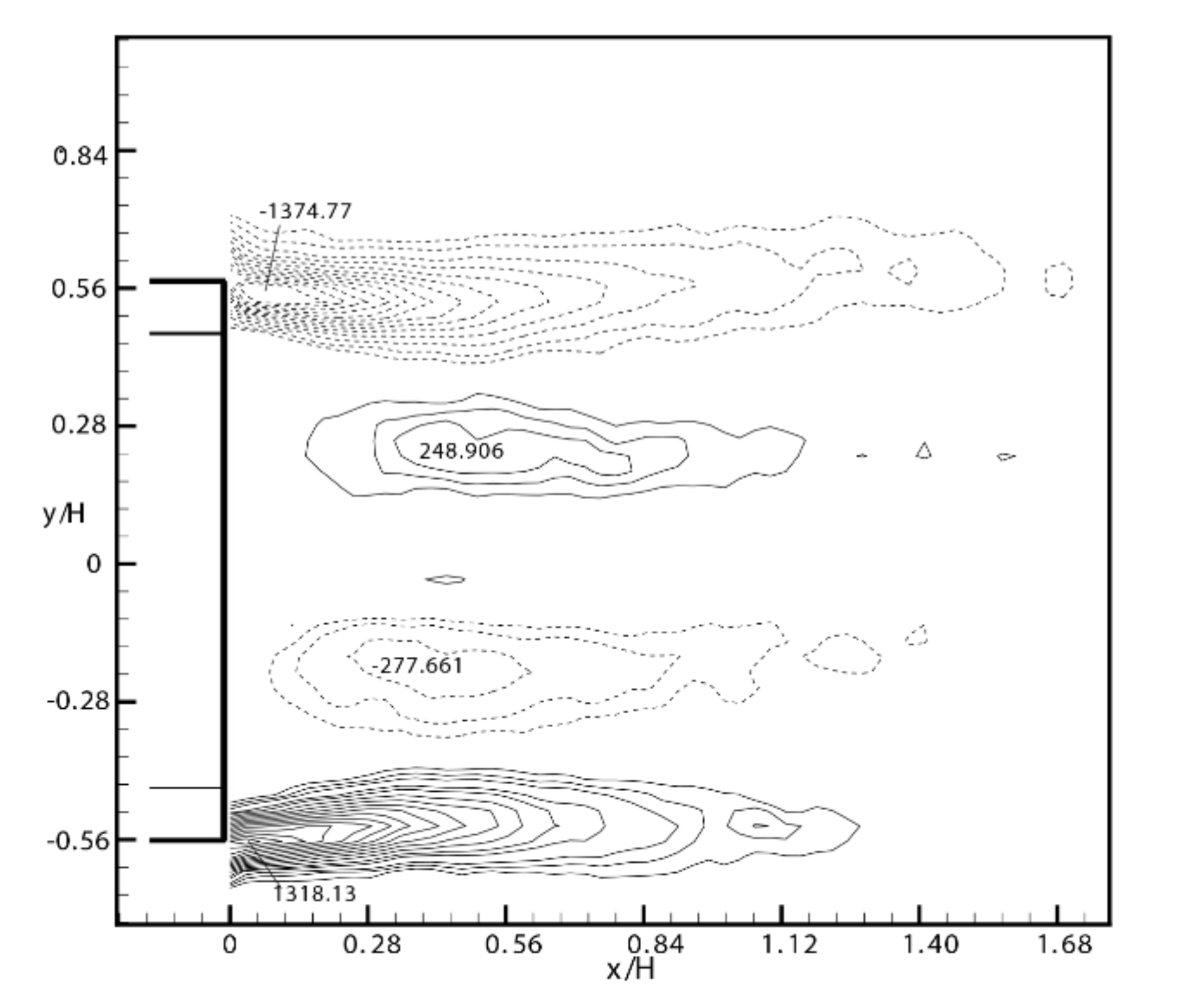

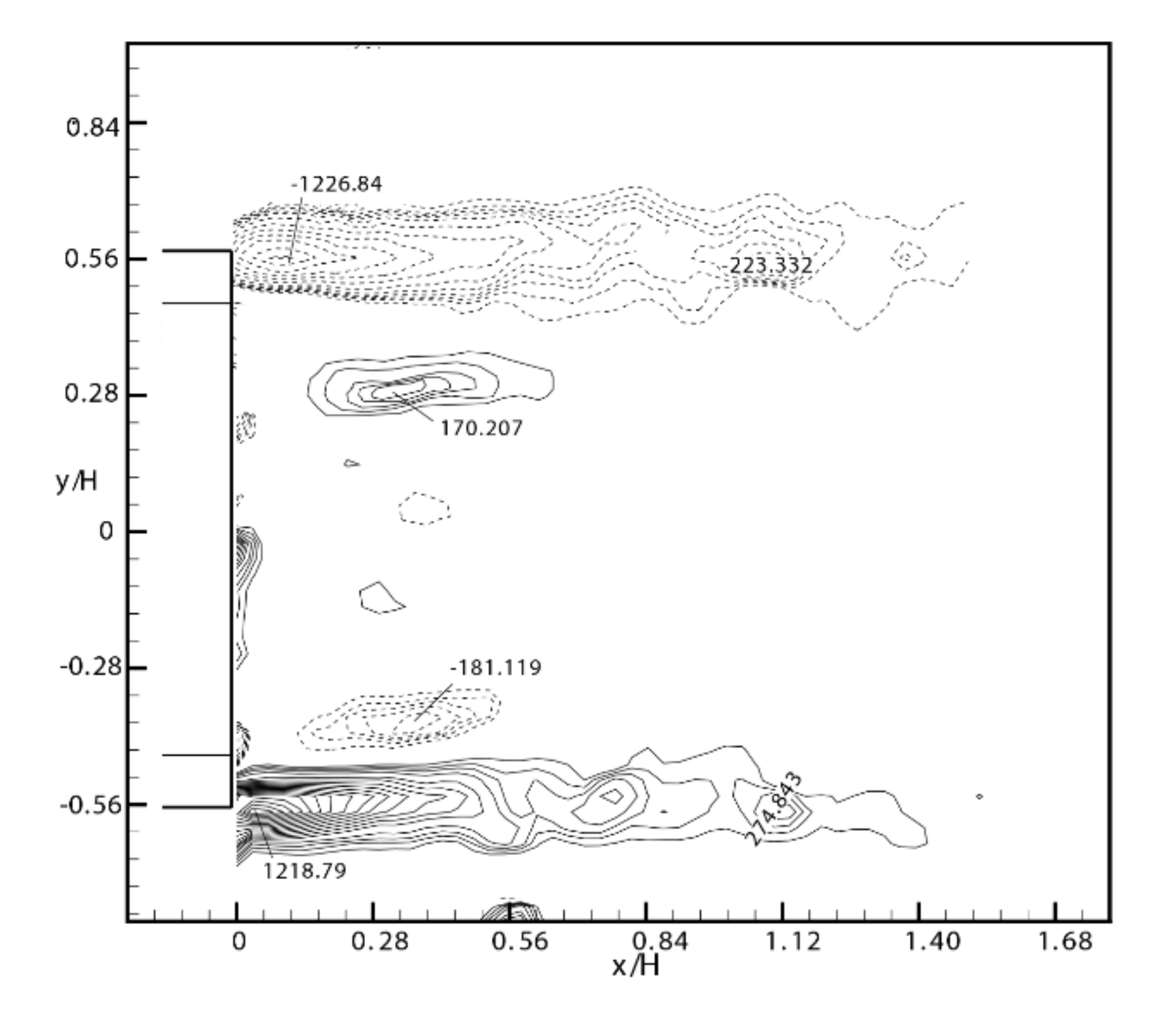
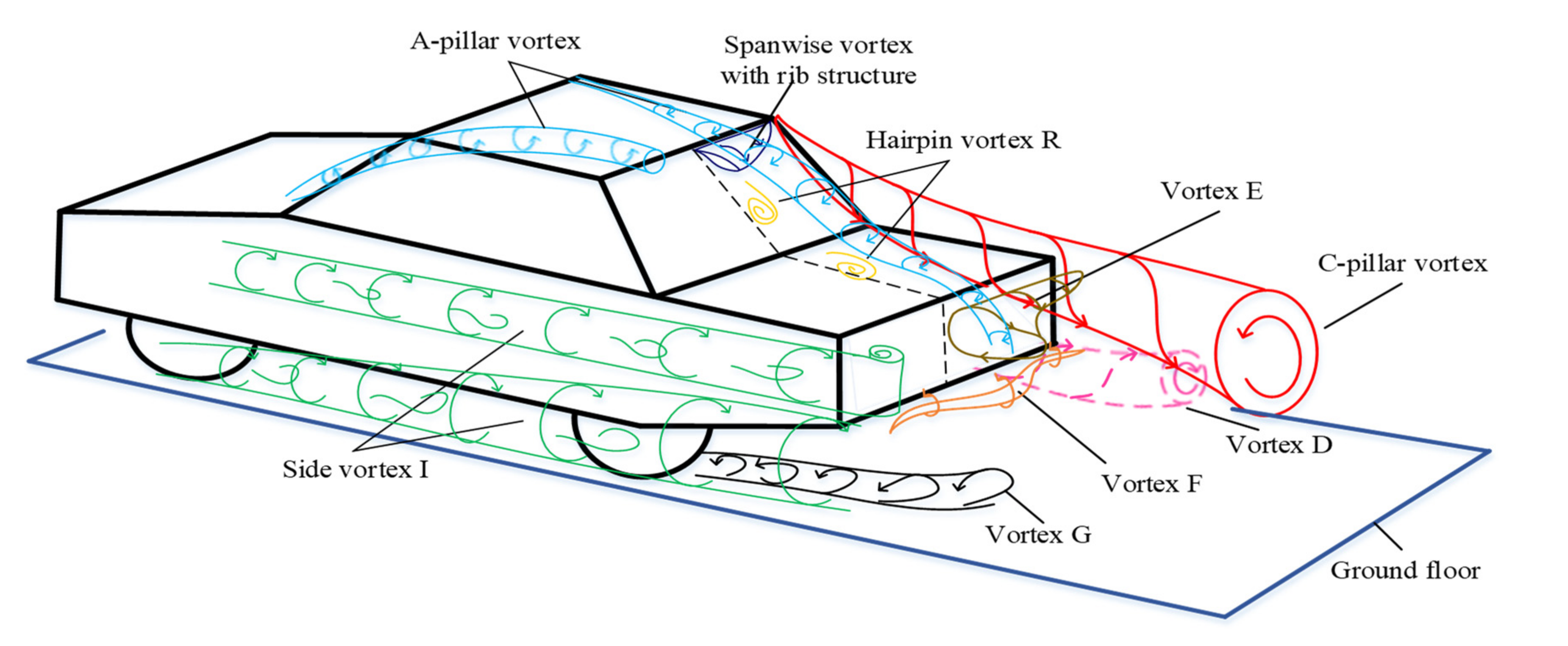
Publisher’s Note: MDPI stays neutral with regard to jurisdictional claims in published maps and institutional affiliations. |
© 2021 by the authors. Licensee MDPI, Basel, Switzerland. This article is an open access article distributed under the terms and conditions of the Creative Commons Attribution (CC BY) license (https://creativecommons.org/licenses/by/4.0/).
Share and Cite
Zhang, Y.; Li, J.; Wang, Z.; Wang, Q.; Gong, H.; Zhang, Z. Wake Flow Investigation on Notchback MIRA Model by PIV Experiments. Energies 2021, 14, 4568. https://doi.org/10.3390/en14154568
Zhang Y, Li J, Wang Z, Wang Q, Gong H, Zhang Z. Wake Flow Investigation on Notchback MIRA Model by PIV Experiments. Energies. 2021; 14(15):4568. https://doi.org/10.3390/en14154568
Chicago/Turabian StyleZhang, Yingchao, Jinji Li, Zijie Wang, Qiliang Wang, Hongyu Gong, and Zhe Zhang. 2021. "Wake Flow Investigation on Notchback MIRA Model by PIV Experiments" Energies 14, no. 15: 4568. https://doi.org/10.3390/en14154568
APA StyleZhang, Y., Li, J., Wang, Z., Wang, Q., Gong, H., & Zhang, Z. (2021). Wake Flow Investigation on Notchback MIRA Model by PIV Experiments. Energies, 14(15), 4568. https://doi.org/10.3390/en14154568






